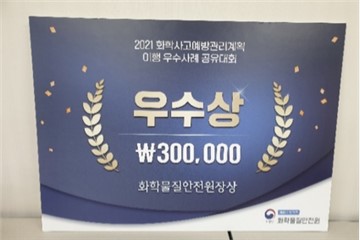The seasonally-adjusted production in all industries, which exclude the agriculture, forestry and fishery sector, stood at 114.4 in November, up 3.2 percent from the previous month, according to Statistics Korea.
It marked the fastest increase in 17 months since June last year, rebounding after skidding 1.9 percent in October.
The government introduced a so-called "living with COVID-19" campaign in November by lifting restrictions on the business hour of crowded facilities and allowing more people to gather in restaurants and cafes.
The move followed the higher vaccination rate. In the latest tally, the country's full vaccination rate reached 82.7 percent of the total population, with 33.4 percent of the population receiving booster shots.
However, uncertainty emerged over the Asian economy as the number of COVID-19 cases resurged amid the rising concern about the new Omicron variant.
The government reintroduced tougher social-distancing rules in December to curb the resurgence. The latest data showed that South Korea's daily number of COVID-19 infections stayed above 5,000 for two days.
Hong Nam-ki, Minister of Economy and Finance and deputy prime minister for economic affairs, said that uncertainty lingered over the economy amid the first worsening of consumer confidence in four months.
Hong noted that external risks remained over the global spread of the Omicron variant, the supply chain disruption and inflationary pressure amid the worry about domestic demand, driven by the tightened anti-COVID-19 measures.
Production among manufacturers expanded 5.3 percent in November from a month earlier, after sliding 1.3 percent in September and 2.9 percent in October respectively.
Semiconductor output rose 4.5 percent last month, and automotive production jumped 11.3 percent on the easing of supply shortage in chips used to manufacture cars.
Output in the services industry added 2 percent in November on a monthly basis, logging the highest expansion in 18 months. The services industry production reduced 0.4 percent in October.
Production in the construction and the public administration sectors increased 2.4 percent and 5.5 percent each in November from the previous month.
Facility investment soared 10.9 percent last month, posting the fastest growth in seven years since November 2014.
Completed construction grew 2.4 percent in November from a month ago.
The seasonally-adjusted retail sale index, which reflects private consumption, came to 119.1 in November, down 1.9 percent from the prior month. It was the highest reduction in 16 months.
The sale of durable goods, including electronic products, retreated 3.2 percent, and the sale of semi-durables such as clothing dropped 5.7 percent. The sale of non-durable goods, including food and beverage, gained 0.4 percent.
The cyclical variation factor for leading economic indicators, which gauges outlook for the future economic situation, dipped 0.4 points over the month to 101.3 in November. It kept a downward trend for five straight months.
The reading for coincident economic indicators, which measure the current economic conditions, added 0.4 points to 101.4 in the month.




















Latest comments